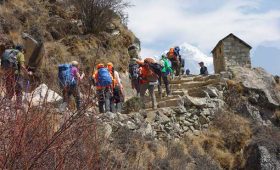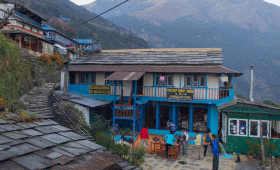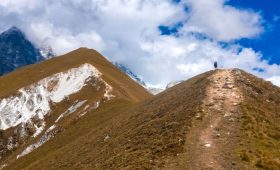Hike and Trekking Difference
Stepping into the outdoors offers a thrilling escape from the rush of daily life. Whether you’re a seasoned adventurer or a novice explorer, the call of the wilderness is irresistible. But amidst nature’s vastness, the terms “hike” and “trekking” are often mixed up, blurring their differences. Let’s lace up our boots and start our journey to explore hike and trekking difference in this complete guide.
People often think trekking and hiking are the same, but are they really? If you’re not sure, keep reading. Let’s explore the differences between hiking and trekking, so you can be a pro at outdoor adventures.
What Actually is Hike and Trekking Difference?
To figure out if hiking and trekking are really different, let’s check out their definitions from the Oxford English Dictionary. According to the dictionary:
Hiking means “going for long walks, especially across country”.
Trekking means “going on a long, tough journey, usually on foot”.
So, according to the dictionary, there’s not much hike and trekking difference. Trekking is just seen as a bit harder than hiking. Hiking sounds more like a cheerful, easy walk, while trekking sounds like a challenging journey that usually takes more than a day.
Hike and Trekking Difference : Modern Use of The Terms
In today’s world, the terms hiking and trekking have slightly different meanings. People have taken the small differences in their definitions and made them a bit bigger.
So, when someone talks about hiking, they’re usually referring to a nice, easy walk for a day or a few days. It’s not too hard and shouldn’t be too challenging.
But when people talk about trekking, they’re usually thinking of more adventurous walks. Like hiking through jungles or going on demanding trips. Think about places like the Annapurna Circuit, trekking to Everest Base Camp, or exploring Ciudad Perdida in the jungle of Colombia.
What are the Benefits of Hiking and Trekking?
1. Lower Risk of Heart Disease and Improved Blood Pressure
Both activities can help lower the risk of heart disease and improve blood pressure due to the cardiovascular exercise involved. Walking uphill during hikes or trekking strengthens your heart and improves circulation.
2. Better Overall Fitness
Engaging in hiking or trekking regularly contributes to better overall fitness. These activities strengthen muscles, improve endurance, and enhance flexibility, leading to a healthier body.
3. Improved Mental Health
Spending time in nature while hiking or trekking has been shown to improve mental health. The fresh air, scenic views, and peaceful surroundings help reduce stress, anxiety, and depression, promoting a positive mindset.
4. Calorie Burning
Hiking and trekking are effective calorie-burning activities. Walking uphill or navigating challenging terrain requires energy expenditure, aiding in weight management and improving metabolic health.
5. Enhanced Creativity
Occupying yourself in nature during hiking or trekking can stimulate creativity. The tranquility of the outdoors, away from the distractions of daily life, fosters introspection and inspiration, leading to heightened creativity and problem-solving skills.
Ready to Explore? Discover the wonders of Nepal with Zeal Nepal Trek! Browse our hiking and trekking packages Now!
Equipment For Choosing Hike and Trekking Difference
When it comes to hiking and trekking, the equipment needed is quite similar because both activities involve venturing into nature. You’ll want essentials like sturdy hiking boots, waterproof clothing, a good backpack, walking poles, and snacks for both.
The main difference lies in how long you’ll be out on the trail. With trekking, you might be out for longer periods, so you might need a tent, survival gear, or versatile clothing that resists odor.
But remember, don’t choose your gear based solely on whether it’s called a hike or a trek. Any outdoor adventure in the wilderness requires specialized gear based on factors like terrain, access to shelter, food needs, weather, and your own physical requirements.
Choosing Between Trekking vs Hiking in Nepal
Deciding between hike and trekking difference and hiking boils down to what you prefer and the kind of adventure you’re after. Both let you enjoy nature, push yourself physically, and have fun outdoors. Trekking is a bit tougher, so being fit and having stamina is important. If you’re not in great shape, start with hiking and work your way up to trekking.
Since hiking is shorter, it’s perfect when you’re short on time. And if you’re up for a longer journey, trekking might be your thing. But remember, trekking requires more gear and can cost more, especially if you need to book with tour companies.
So, think about what you’re up for and how much time and money you’re willing to invest before making your choice between hiking and trekking.
Conclusion
Now that we understand the hike and trekking difference, let’s gear up and hit the trails. Whether it’s a casual hike or an epic trek, nature awaits with its wonders, ready to inspire and challenge us. So, lace up your boots, pack your essentials, and embark on your next adventure beyond the beaten path.
Feeling Inspired? Plan your next adventure with Zeal Nepal Trek! Explore our hiking and trekking adventure holidays!




